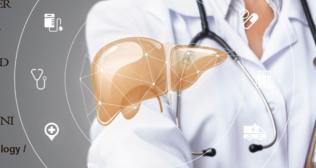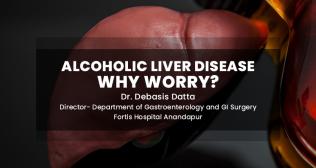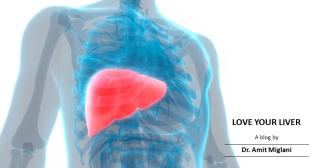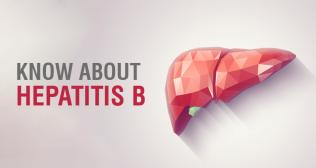
Urea Cycle - Steps, Significance and Importance
Urea Cycle: An Introduction
The main metabolic mechanism involved in removing nitrogenous wastes generated by the breakdown of protein as well as other nitrogen-containing molecules is the urea cycle. In the mitochondria of hepatocytes/liver cells, the urea cycle transforms abundant ammonia to urea. Urea is produced, goes into the bloodstream, is filtered by the kidneys, and is finally removed in the body fluid - urine.
The biochemical part of excretion is urea production utilising the urea cycle, also referred to as the Ornithine Cycle. It is also referred to as the Kreb-Henseleit cycle and happens in the liver. In this blog, we will see the regulation and significance of this cycle.
What is Urea Cycle?
- The urea cycle refers to a series of biochemical reactions that results in the generation of urea from ammonia.
- The urea cycle transforms highly harmful ammonia to urea, which is then moved out of the body. This cycle was explored five years prior to the TCA cycle by Hans Krebs along with Kurt Henseleit.
- The urea cycle happens in the vital organ - liver and, to a lesser extent, in the excretory organ -kidneys.
- The urea cycle is irreversible as well as needs 4 ATP to finish.
- Only the liver has all the biocatalysts needed to generate urea from ammonia, and this pathway is only found in periportal hepatocytes.
- The urea cycle is formed of four different biocatalyst processes, one mitochondrial as well as three cytosolic. Carbamoyl phosphate synthetase (CPS), ornithine carbamoyltransferase (OCT) compound, argininosuccinate synthetase, argininosuccinate lyase, as well as arginase are all implicated.
- The urea cycle enzymes ornithine carbamoyltransferase as well as arginase are also found in the powerhouse of cell mitochondria, whereas the cytoplasm comprises argininosuccinate synthetase and argininosuccinate lyase.
What are the Steps in the Urea Cycle?
The urea cycle refers to a series of five reactions catalyzed by several key enzymes. The first two steps in the cycle take place in the mitochondrial matrix, and the rest of the steps take place in the cytosol. Thus, the urea cycle spans two cellular compartments of the liver cell.
In the first step of the Krebs-Henseleit cycle, ammonia produced in the mitochondria is converted to carbamoyl phosphate by an enzyme called carbamoyl phosphate synthetase I. The reaction can be given as follows:
NH3 + CO2 + 2ATP → carbamoyl phosphate + 2ADP + Pi
The second step involves the movement of a carbamoyl group from the compound carbamoyl phosphate to ornithine to produce citrulline. This step is catalyzed by the enzyme ornithine transcarbamoylase (OTC). The reaction is given as follows:
Carbamoyl phosphate + ornithine → citrulline + Pi
Citrulline thus formed is released into the cytosol for use in the rest of the steps of the cycle.
The third step is catalyzed by an enzyme called argininosuccinate synthetase, which uses citrulline and ATP to form a citrullyl-AMP intermediate, which reacts with an amino group from aspartate to produce argininosuccinate. This reaction can be given as follows:
Citrulline + ATP + aspartate → argininosuccinate + AMP + PPi
The fourth step involves the cleavage of argininosuccinate to form fumarate and arginine. Argininosuccinate lyase is the enzyme catalyzing this reaction, which can be represented as follows:
Argininosuccinate → arginine + fumarate
In the fifth and last step of the urea cycle, arginine is hydrolyzed to form urea and ornithine. This is catalyzed by arginase and can be given as follows:
Arginine → urea + ornithine
Significance of the Urea Cycle
The primary purpose of the urea cycle is to remove harmful ammonia from the human body. Approximately 10 to 20 g of ammonia is excreted from the healthy adult body every day. A dysfunctional urea cycle would mean abundant quantity of ammonia in the body, which can lead to hyperammonaemia and related diseases. The deficiency of one or more of the significant enzymes catalyzing variety of reactions in the urea cycle can trigger disorders related to the cycle. Problems in the urea cycle can cause vomiting, coma and convulsions in newborn babies. This is often misdiagnosed as septicaemia as well as treated with antibiotics in vain. Even 1mm of too much ammonia can cause severe and irreversible damage.
Importance of Urea Cycle
- Ammonium is a byproduct of amino acid degradation.
- Cells require ammonium to produce nitrogen-containing molecules.
- Too much ammonium is highly harmful to our body. So, the too much ammonium is transformed into urea and removed via the urea cycle. The urea cycle holds for 80% of the nitrogen excreted.
- TCA cycle intermediates are recycled.
- Amino acids as well as keto acids are recycled.
In a nutshell, the urea cycle is a fundamental biochemical process essential for detoxifying ammonia as well as regulating nitrogen balance in the body. Its enzymatic reactions transform harmful ammonia into urea, which is safely removed out of the body through urine. The cycle’s significance extends beyond detoxification, impacting protein metabolism, energy production, as well as overall health. Understanding as well as maintaining the urea cycle’s proper function is crucial for preventing metabolic disorders and ensuring the body’s metabolic harmony



















